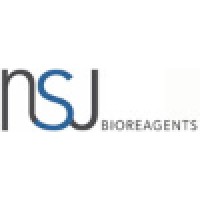Spectrin beta 3 / Unconjugated / SPTBN2/1583
Product Details
| Description | Spectrin is an actin binding protein that is a major component of the plasma membrane skeleton. Spectrins function as membrane organizers and stabilizers by forming dimers, tetramers and higher polymers. Spectrin and spectrin are present in erythrocytes, whereas spectrin II (fodrin ) and spectrin I (fodrin ) are present in other somatic cells. SPTBN2/Spectrin III is highly homologous to both spectrin I and spectrin II. SPTBN2 is highly expressed in brain, kidney, pancreas and liver, and at lower levels in lung and placenta. | |
|---|---|---|
| Conjugate | Unconjugated | |
| Clone | SPTBN2/1583 | |
| Target Species | Human | |
| Applications | FC, IF, IHC-P, WB | |
| Supplier | NSJ Bioreagents | |
| Catalog # | Sign in to view product details, citations, and spectra | |
| Size | ||
| Price | ||
| Antigen | ||
| Host | ||
| Isotype |
About Spectrin beta 3
Spectrins are principle components of a cell's membrane-cytoskeleton and are composed of two alpha and two beta spectrin subunits. The protein encoded by this gene (SPTBN2), is called spectrin beta non-erythrocytic 2 or beta-III spectrin. It is related to, but distinct from, the beta-II spectrin gene which is also known as spectrin beta non-erythrocytic 1 (SPTBN1). SPTBN2 regulates the glutamate signaling pathway by stabilizing the glutamate transporter EAAT4 at the surface of the plasma membrane. Mutations in this gene cause a form of spinocerebellar ataxia, SCA5, that is characterized by neurodegeneration, progressive locomotor incoordination, dysarthria, and uncoordinated eye movements. [provided by RefSeq, Dec 2009]
Spectrins are principle components of a cell's membrane-cytoskeleton and are composed of two alpha and two beta spectrin subunits. The protein encoded by this gene (SPTBN2), is called spectrin beta non-erythrocytic 2 or beta-III spectrin. It is related to, but distinct from, the beta-II spectrin gene which is also known as spectrin beta non-erythrocytic 1 (SPTBN1). SPTBN2 regulates the glutamate signaling pathway by stabilizing the glutamate transporter EAAT4 at the surface of the plasma membrane. Mutations in this gene cause a form of spinocerebellar ataxia, SCA5, that is characterized by neurodegeneration, progressive locomotor incoordination, dysarthria, and uncoordinated eye movements. [provided by RefSeq, Dec 2009]
Experiment Design Tools
Panel Builders
Looking to design a Microscopy or Flow Cytometry experiment?
Validation References
Reviews & Ratings
| Reviews |
|---|
Looking for more options?
545 Spectrin beta 3 antibodies from over 17 suppliers available with over 47 conjugates.





